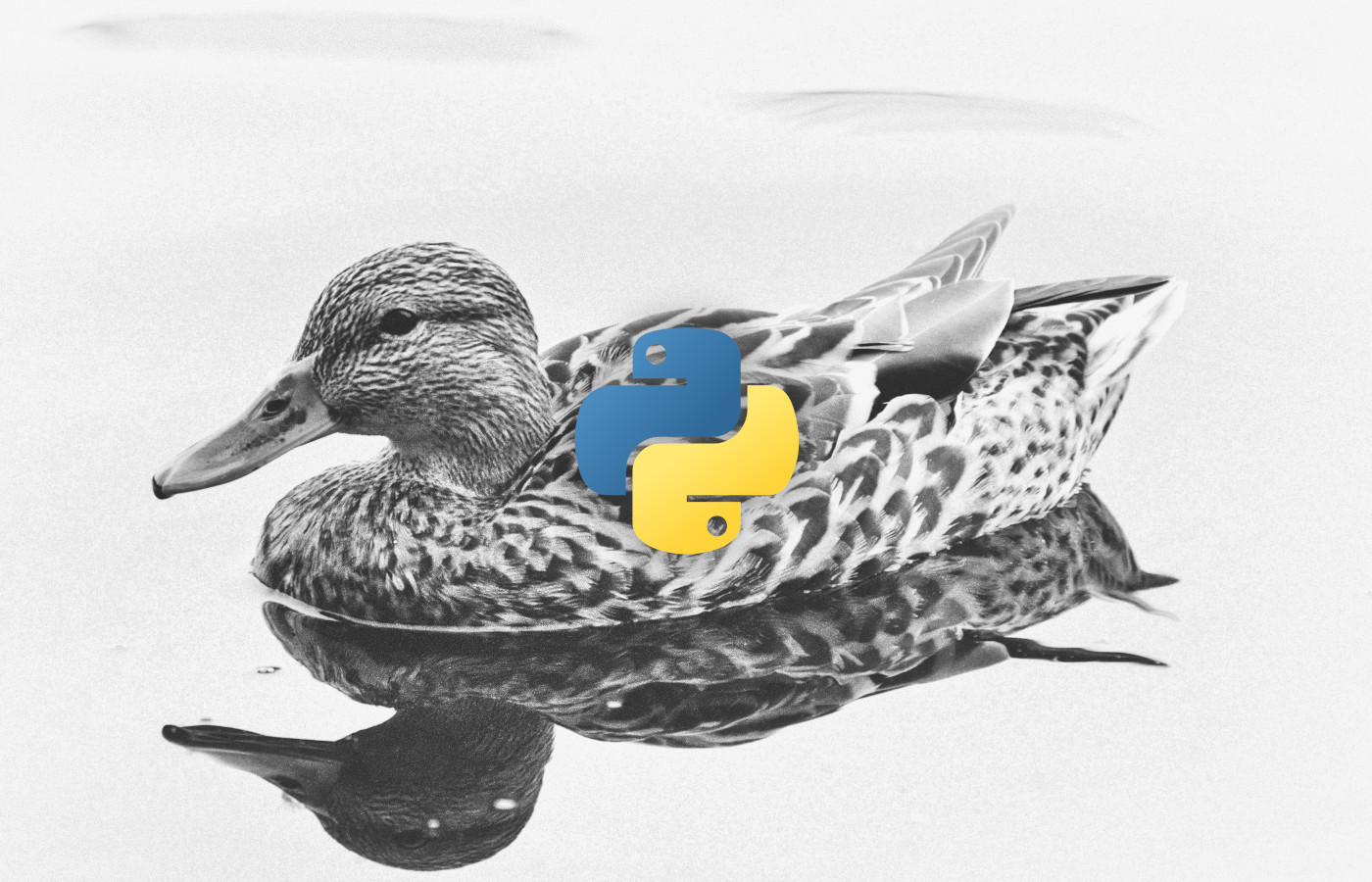In new versions of Python, type annotations gain more and more support, and are increasingly used in libraries, frameworks, and Python projects. In addition to the additional documentation of the code, type annotations allow tools such as mypy to statically perform additional validation checks and identify possible errors in the code. This article will talk about one, I think, an interesting topic related to static type checking in Python - protocols, or as stated in PEP-544 , static duck typing .

Content
, Python, , - :
, , , ,
– , , , , . , , . , , . , .
>>> class Meter:
... def __len__(self):
... return 1_000
...
>>> len([1, 2, 3])
3
>>> len("Duck typing...")
14
>>> len(Meter())
1000
len
, , __len__()
.
. , , – . .
(nominal type system) , , , . Duck
Bird
, Duck
, Bird
. Python, mypy , , , .
:
class Bird:
def feed(self) -> None:
print("Feeding the bird...")
class Duck(Bird):
def feed(self) -> None:
print("Feeding the duck...")
class Goose:
"""
- Bird.
"""
def feed(self) -> None:
print("Feeding the goose...")
def feed(bird: Bird) -> None:
bird.feed()
# OK
feed(Bird())
# OK
feed(Duck())
# Mypy error: Argument 1 to "feed" has incompatible type "Goose";
# expected "Bird"
feed(Goose())
# Mypy error: Argument 1 to "feed" has incompatible type "None";
# expected "Bird"
feed(None)
Goose
feed
, Bird
, mypy.
. , Java, C#, C++ .
(structural type system) , . , , compile time duck typing.
. , Go – , . , Go - , , .
– TypeScript, :
// TypeScript
interface Person {
name: String
age: Number
}
function show(person: Person) {
console.log("Name: " + person.name)
console.log("Age: " + person.age)
}
class Employee {
name: String
age: Number
constructor(name: String, age: Number) {
this.name = name
this.age = age
}
}
class Figure {}
// OK
show(new Employee("John", 30))
// OK
show({name: "Peter", age: 25})
// Error:
// Argument of type 'Figure' is not assignable to parameter of type 'Person'.
// Type 'Figure' is missing the following properties
// from type 'Person': name, age
show(new Figure())
Employee
Person
, . , Employee
name
age
. Figure
, , , , , Person
.
Python
Python 3.8 (PEP-544), Python. Python , . , , , , .
"" , ( , , mypy). , - , (abc.ABC
), .
:
import typing as t
# t.Iterable[int] -
def iterate_by(numbers: t.Iterable[int]) -> None:
for number in numbers:
print(number)
# OK
iterate_by([1, 2, 3])
# OK
iterate_by(range(1_000_000))
# Mypy error: Argument 1 to "iterate_by" has incompatible type "str";
# expected "Iterable[int]"
# note: Following member(s) of "str" have conflicts:
# note: Expected:
# note: def __iter__(self) -> Iterator[int]
# note: Got:
# note: def __iter__(self) -> Iterator[str]
iterate_by("duck")
Mypy , iterate_by
(, __iter__
).
, , mypy , .
# ...
class Fibonacci:
def __iter__(self) -> t.Iterator[int]:
a, b = 0, 1
while True:
yield a
a, b = b, a + b
# OK
iterate_by(Fibonacci())
class Animals:
"""
, ,
,
.
"""
def __iter__(self) -> t.Iterator[str]:
yield from ["duck", "cat", "dog"]
# Mypy error: Argument 1 to "iterate_by" has incompatible type "Animals";
# expected "Iterable[int]"
iterate_by(Animals())
( typing
) . mypy.
, . mypy , .
:
import typing as t
class Figure(t.Protocol):
""" ."""
# ,
name: str
def calculate_area(self) -> float:
""" ."""
def calculate_perimeter(self) -> float:
""" ."""
def show(figure: Figure) -> None:
print(f"S ({figure.name}) = {figure.calculate_area()}")
print(f"P ({figure.name}) = {figure.calculate_perimeter()}")
Protocol
typing
. - , . - ( -).
, Figure
.
# ...
class Square:
name = ""
def __init__(self, size: float):
self.size = size
def calculate_area(self) -> float:
return self.size * self.size
def calculate_perimeter(self) -> float:
return 4 * self.size
def set_color(self, color: str) -> None:
"""
,
.
"""
self.color = color
# OK
show(Square(size=3.14))
, Square
Figure
. Mypy show
Figure
, Square
. , . , Figure
show
, Square
– ( ). , .
, mypy :
# ...
class Circle:
PI = 3.1415926
name = ""
def __init__(self, radius: float):
self.radius = radius
def calculate_perimeter(self) -> float:
return 2 * self.PI * self.radius
# Mypy error: Argument 1 to "show" has incompatible type "Circle";
# expected "Figure"
# note: 'Circle' is missing following 'Figure' protocol member:
# note: calculate_area
show(Circle(radius=1))
mypy , ( ).
, , . mypy , .
import typing as t
import abc
class Readable(t.Protocol):
@abc.abstractmethod
def read(self) -> str:
...
def get_size(self) -> int:
"""
-.
"""
return 1_000
# OK
class File(Readable):
def read(self) -> str:
return " "
# OK
print(File().get_size()) # 1000
# Mypy error: Return type "int" of "read" incompatible
# with return type "str" in supertype "Readable"
class WrongFile(Readable):
def read(self) -> int:
return 42
(abc.ABC
), , -. , , mypy .
runtime_checkable
, isinstance
issubclass
. , , mypy :
# ... Figure
s = Square(4)
# Mypy error: Only @runtime_checkable protocols can be used
# with instance and class checks
# isinstance(s, Figure)
isinstance(s, Figure)
, @runtime_checkable
, .
import typing as t
@t.runtime_checkable
class HasLength(t.Protocol):
def __len__(self) -> int:
...
# OK
print(isinstance("", HasLength)) # True
print(isinstance([1, 2, 3], HasLength)) # True
- , , PEP-544.
Python, . Mypy Python. , , , , .
If you have anything to add about the pros and cons of structured typing, please share your thoughts in the comments.
Notes (edit)
All examples discussed in this article were tested in Python 3.9 / mypy 0.812.
Mypy settings file
useful links
mypy
PEP-544 - Protocols: Structural subtyping
Duck Typing (Python Glossary)
Nominal type system (Wikipedia)
Structural type system (Wikipedia)
The Iterator Protocol: How "For Loops" Work in Python
Protocols and structural subtyping (mypy Documentation)
Go interfaces